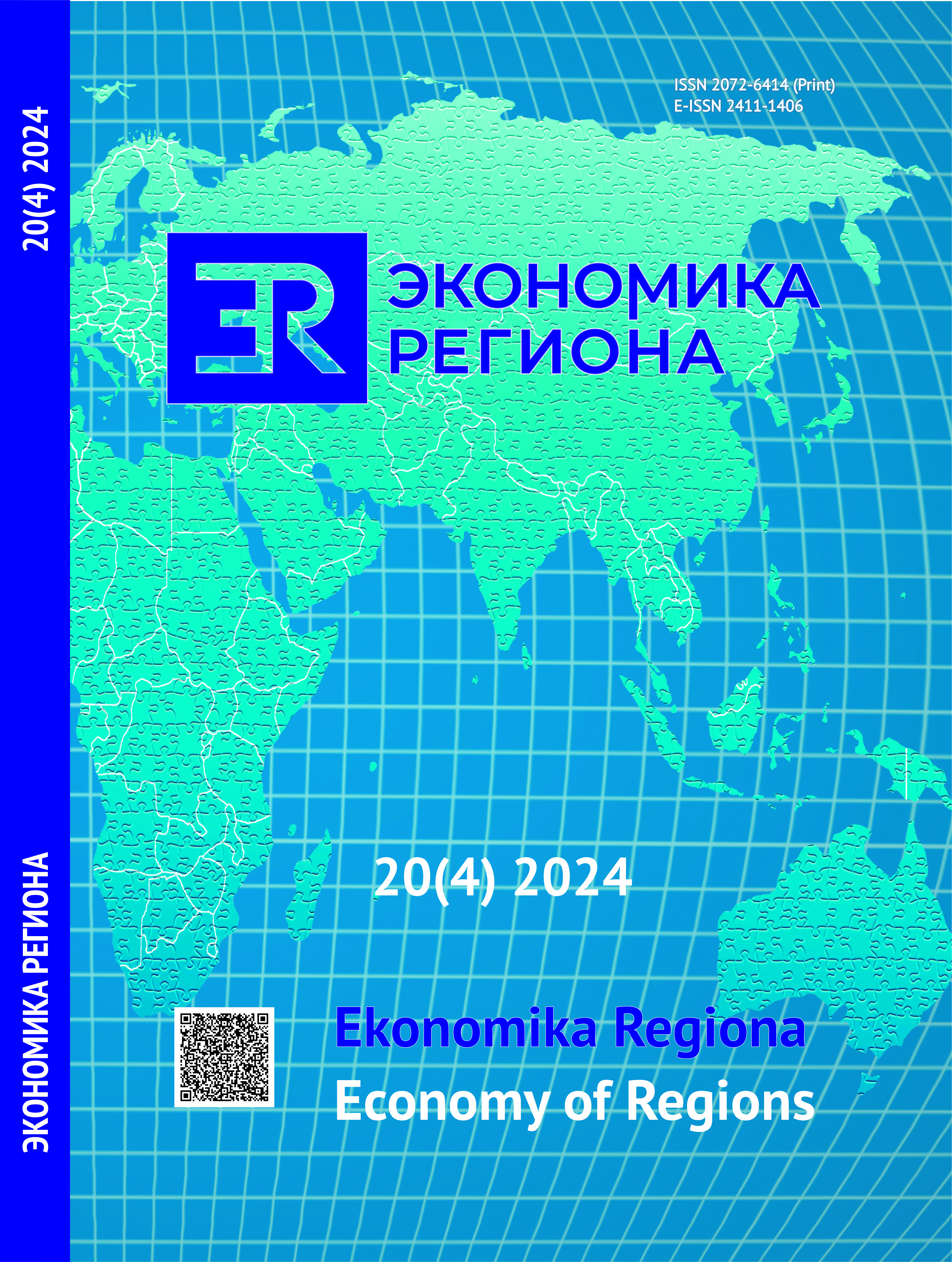Assessing Spatial Development Priorities in Sverdlovsk Oblast (Russia) Through SAR Modelling and Autocorrelation Analysis
DOI:
https://doi.org/10.17059/ekon.reg.2024-4-9Keywords:
priorities of spatial development, distribution of productive forces, spatial autocorrelation analysis, spatial autoregressive modelling SAR, spatial mutual influences, municipalitiesAbstract
Disparities in the socio-economic development of regions necessitate clearer priority-setting for their spatial growth and sustainable economic progress. The hypothesis of this study is that the primary goal for the region’s spatial development should be to establish “growth poles” in municipalities with a high concentration of resources and strong connections to surrounding areas. The study aims to develop a method to identify and justify these spatial development priorities, using municipalities in Sverdlovsk oblast as a case study. Within the proposed methodology, territories were divided into two subgroups within the quadrants of P. Moran’s scatter plot, based on spatial interaction levels, to identify both existing and emerging growth poles, as well as areas of strong and moderate influence. The effectiveness of selected priorities was assessed by applying a differentiated approach to building spatial SAR models. As a result, two groups of territories were categorized: spatially interconnected areas, which include growth poles and regions forming spatial clusters along with their influence zones, and spatially remote areas. Findings indicate that the spatial development priorities of Sverdlovsk oblast should focus on establishing growth poles in municipalities with a high concentration of enterprises, labour, and investment resources (e.g., Nizhny Tagil and Kamensk-Uralsky), as well as in municipalities within the strong influence zone of an active growth pole (e.g., Berezovsky, Verkhnyaya Pyshma, and others). It is essential to strengthen cooperative relationships between municipalities, particularly in the influence zone of Ekaterinburg agglomeration, as highlighted by P. Moran’s spatial autocorrelation analysis.
Downloads
Published
How to Cite
Issue
Section
License
Copyright (c) 2024 Никулина Наталья Леонидовна , Наумов Илья Викторович

This work is licensed under a Creative Commons Attribution 4.0 International License.




